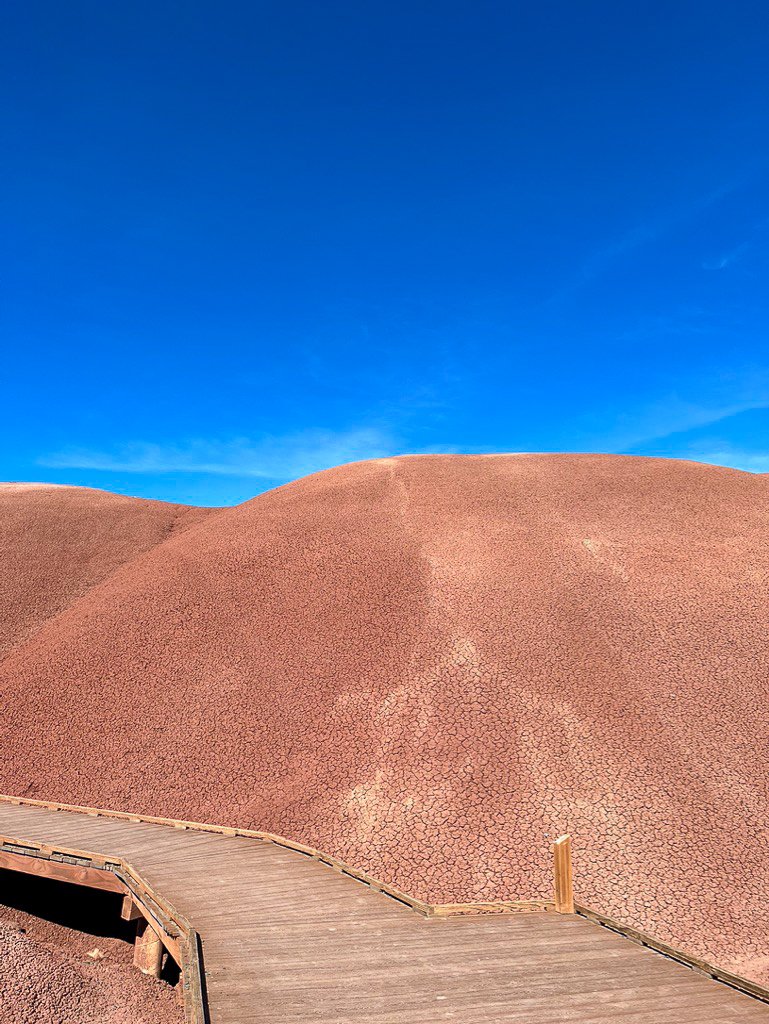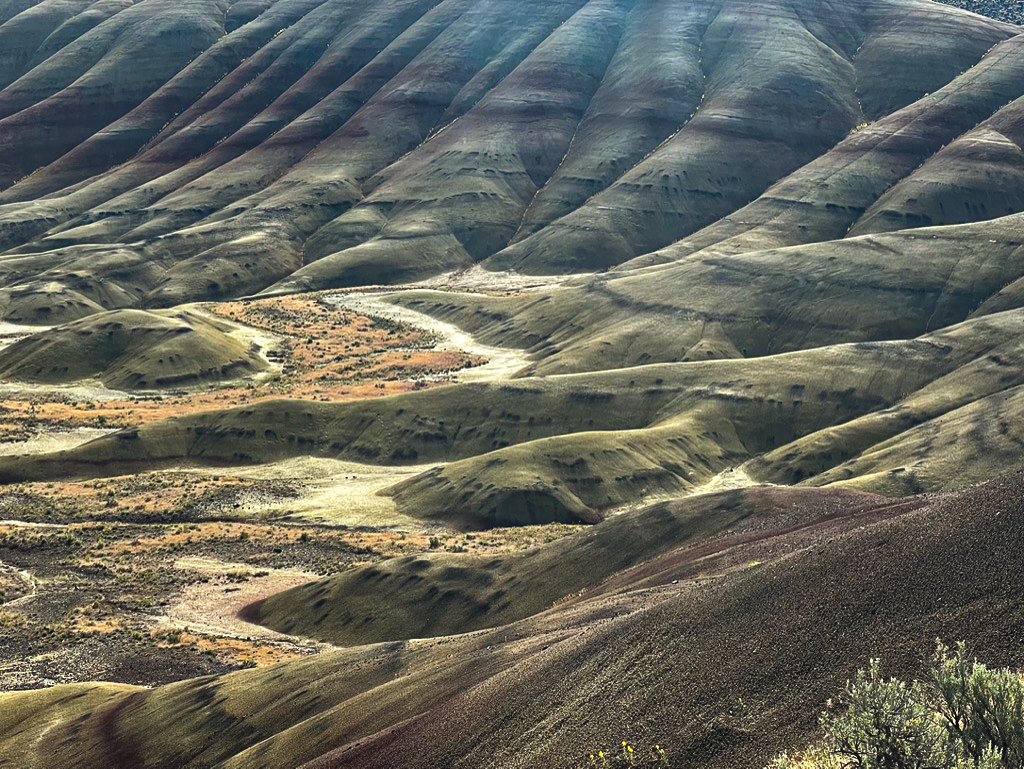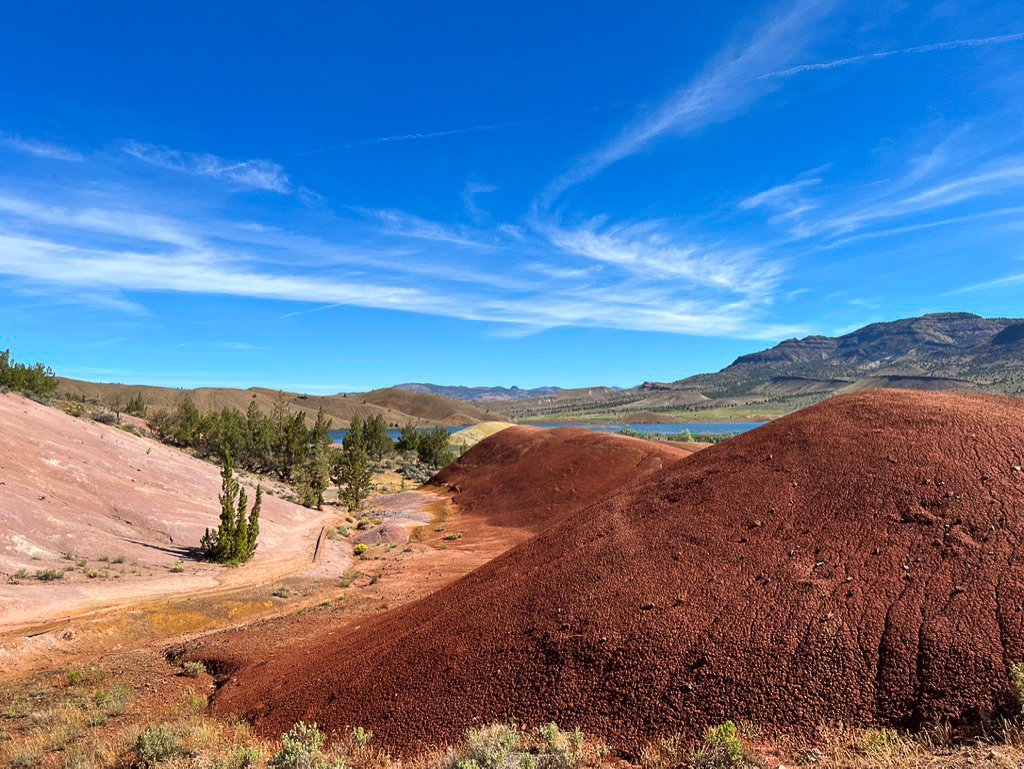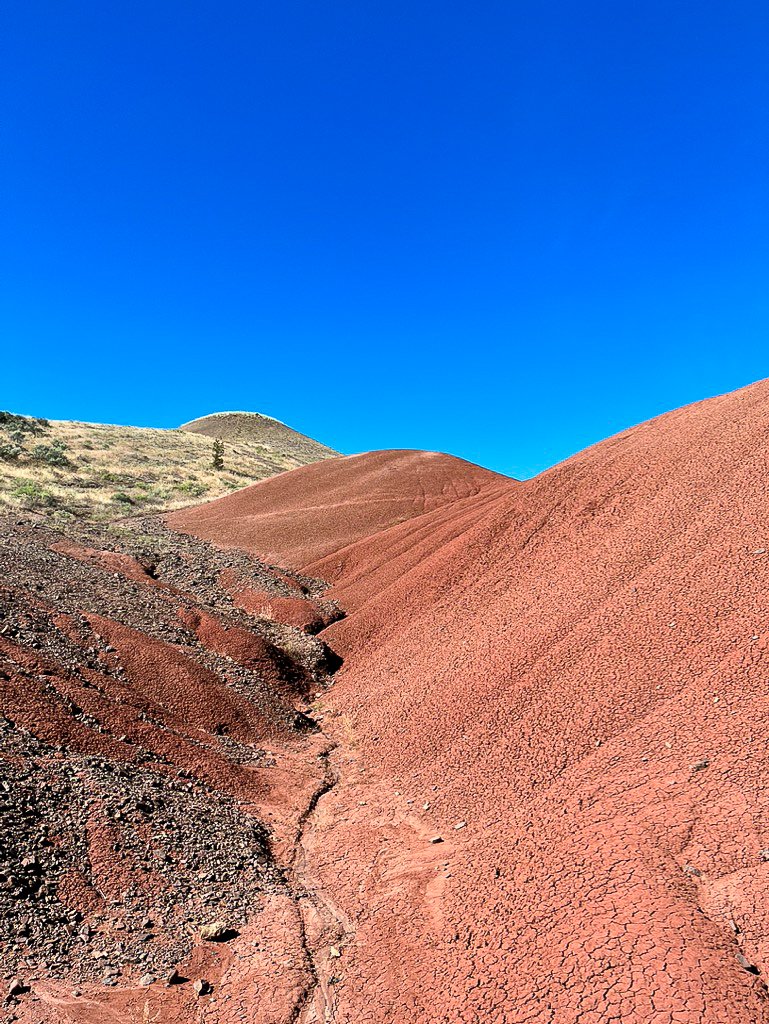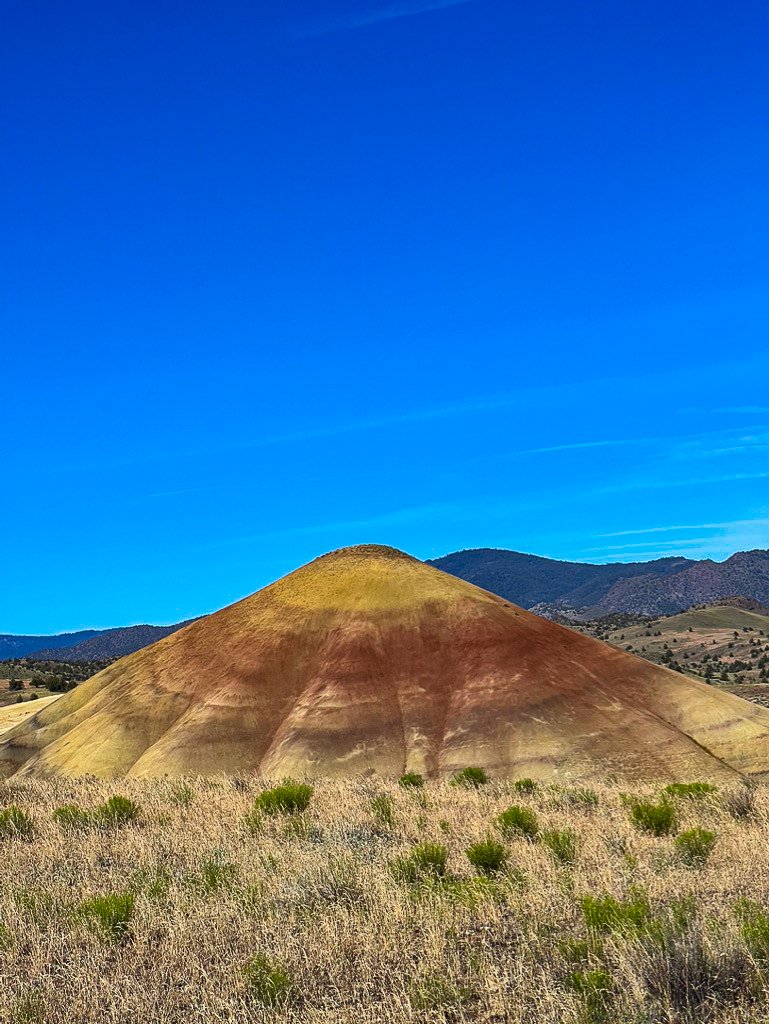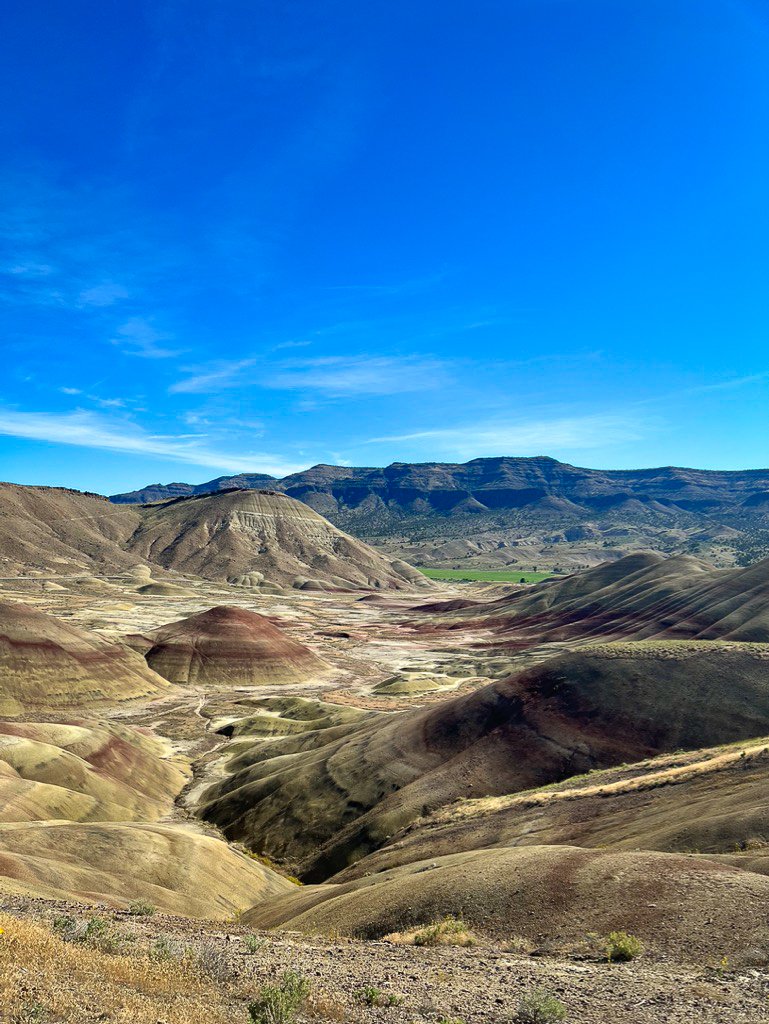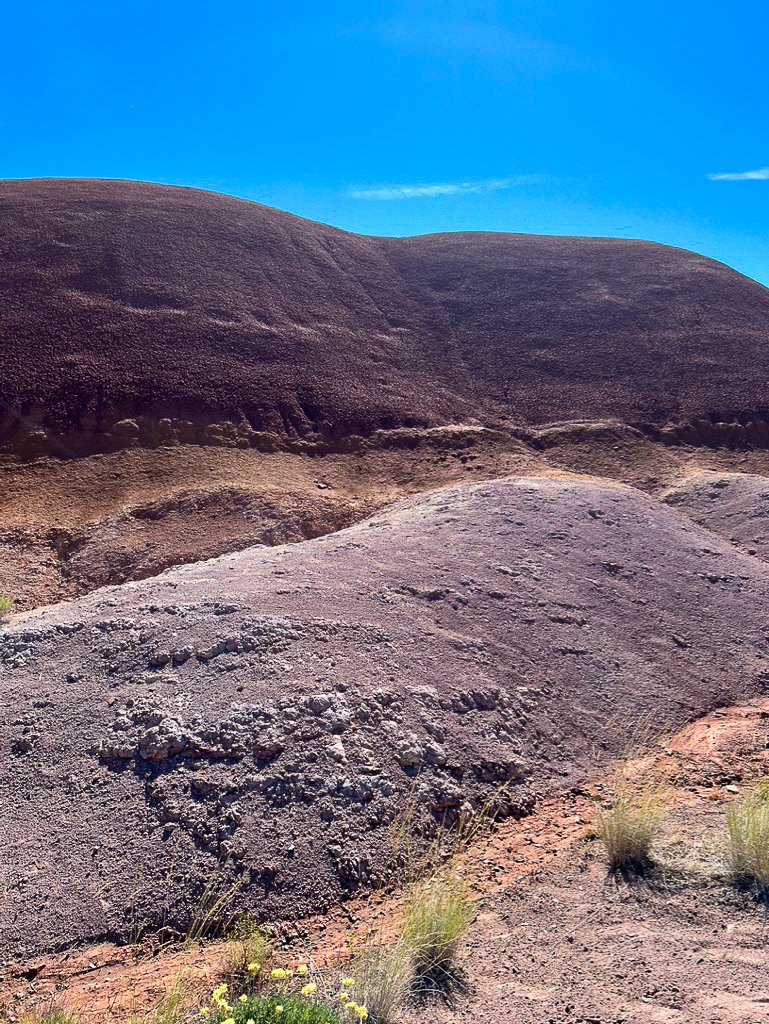A Guide to Visiting Oregon’s Painted Hills National Monument
About the Painted Hills
Eastern Oregon’s painted Hills are one of ‘The Seven Wonders of Oregon.’ They are one of the three units of the John Day Fossil Beds National Monument and offer a rugged, vivid landscape reminiscent of a time long, long ago.
The fascinating geology of The Painted Hills are artistic revelations of climate change on Earth. The colored banded deposits represent changes in climate that occurred at the time they were formed.
Painted Hills National Monument is nearest the town of Mitchell, Oregon. The area is great for hiking, camping, exploring, and of course, photography. Mornings and evenings offer special opportunities to see the colors of the Painted Hills illuminated by the light of sunrise and sunset.
Getting to The Painted Hills
Campsites near Painted Hills National Monument are mostly primitive, and do not have water or toilets, so prepare accordingly.
The closest city is Bend, Oregon, which is about a two-hour drive. You’ll drive through Ochoco National Forest for about an hour before you start to see signs that will direct you to Painted Hills. You will turn left on Burnt Ranch Road, and then arrive at your destination within minutes.
Once you arrive in the Painted Hills, the roads are gravel. Take it slow and be mindful and respectful of dust.
Camp
Camp at Ochoco Divide or Priest Hole.
Many campsites in this area are primitive, meaning they do not have water or toilets. Prepare accordingly and ALWAYS HAVE WATER.
The closest town to the Painted Hills is Mitchell, Oregon; 9 miles away.
Best Hikes in Painted Hills National Monument
Leaf Fossil Trail
This is a short and easy 0.25 mile (0.4-kilometre) loop trail.
Leaf Fossil Trail is a nice hike with some desert-like vegetation along the trail.
The trail takes about 10 minutes to complete depending on your pace. The path is made up of rock, with a few small boardwalks.
Leaf Fossil Trail gets its name from the thousands of fossils that have been excavated around the area. Collecting fossils here is prohibited, meaning you must leave them where you’ve found them.
Paleontologists have been excavating and studying the area around this trail for many years. There are signs along the trail that teach you about the history surrounding the Leaf Fossil Trail.
Red Scar Knoll Trail
This is an easy, short trail that is about 0.25 miles (0.4-kilometres) long.
This trial is a flat dirt path that takes you through the desert-like landscape. Its very worth it since it won’t take you long to do, and the hill’s colour of red is spectacular!
Painted Hills Overlook Trail
This trail is 0.5 mile (0.8-kilometres), and is an easy with a slight incline.
From the top of the hike you are able to really see the colors in the layers throughout the landscape.
The views become more vibrant later in the afternoon as the sun starts to set and illuminate the hills.
If you are hiking in Painted Hills, Oregon, make this one of the hikes!
Painted Cove Trail
The Painted Cove Trail is an easy, 0.25 mile (0.4-kilometre) hike that takes you along a boardwalk through the stunning, red-painted hills.
You can walk up to the top lookout that showcases a view of the red hills and boardwalk down below, as well as the surrounding landscapes, which is a super picturesque view.
Carroll Rim Trail
Carroll Rim trail is the longest hike in Painted Hills at 2.6 kilometres, with an elevation gain of 120 metres.
It takes you to an incredible panorama view of Oregon’s Painted Hills.
Food/Drink
Check out the delicious Tiger Town Brewery in Mitchell, Oregon or grab an amazing espresso at Route 26 Espresso.
Dog Walk
Dogs are permitted in Painted Hills National Monument but must be on a leash and, like you, always on the trail.
Bring adequate water and supplies for your pup especially on hot days so they don’t get sick.
The Best Time of Year to Visit Painted Hills National Monument
The Painted Hills receive snow in the winter months, so this is an inopportune time to experience the colors of its landscape.
The summer months get very hot. It can be nearly unbearable, and there is not much shade coverage. Its best to explore in the early morning or evenings during the hot months.
In the Spring, wildflowers bloom all around the area and temperatures are usually moderate.
The rains of Fall make the colors more vibrant, and the weather cooler in temperature.
